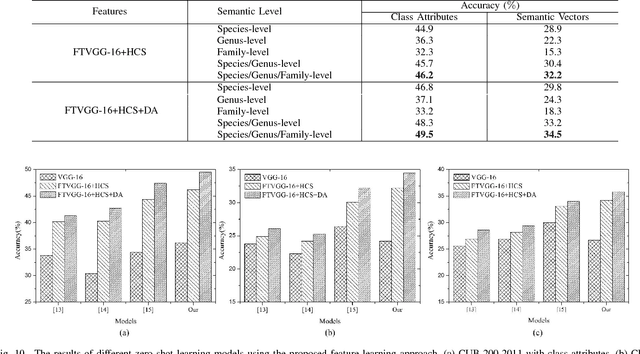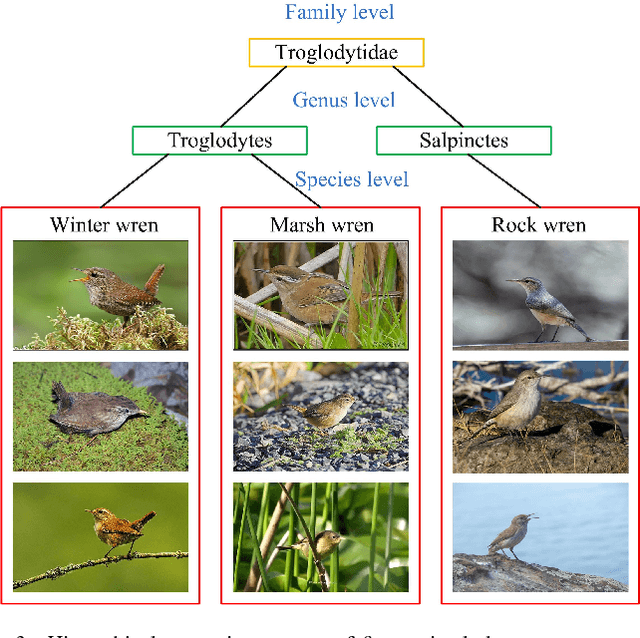Zero-Shot Fine-Grained Classification by Deep Feature Learning with Semantics
Paper and Code
Jul 04, 2017



Fine-grained image classification, which aims to distinguish images with subtle distinctions, is a challenging task due to two main issues: lack of sufficient training data for every class and difficulty in learning discriminative features for representation. In this paper, to address the two issues, we propose a two-phase framework for recognizing images from unseen fine-grained classes, i.e. zero-shot fine-grained classification. In the first feature learning phase, we finetune deep convolutional neural networks using hierarchical semantic structure among fine-grained classes to extract discriminative deep visual features. Meanwhile, a domain adaptation structure is induced into deep convolutional neural networks to avoid domain shift from training data to test data. In the second label inference phase, a semantic directed graph is constructed over attributes of fine-grained classes. Based on this graph, we develop a label propagation algorithm to infer the labels of images in the unseen classes. Experimental results on two benchmark datasets demonstrate that our model outperforms the state-of-the-art zero-shot learning models. In addition, the features obtained by our feature learning model also yield significant gains when they are used by other zero-shot learning models, which shows the flexility of our model in zero-shot fine-grained classification.
 Add to Chrome
Add to Chrome Add to Firefox
Add to Firefox Add to Edge
Add to Edge